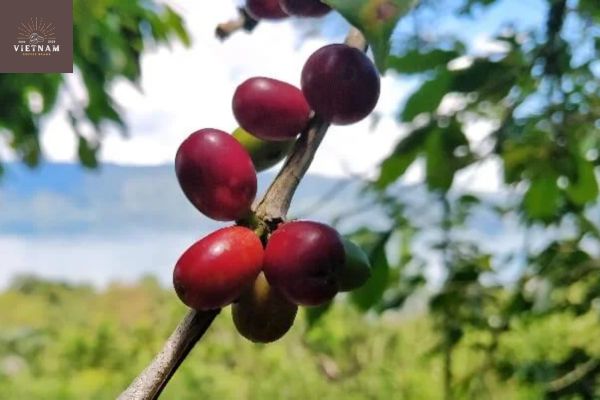I’ve had the pleasure of delving into the world of coffee processing, and one method that has truly captivated me is honey processed coffee. It’s gaining quite the following, especially in Central America, where countries like Costa Rica and El Salvador are embracing this unique approach.
Unlike the traditional washed process, honey coffee involves drying the coffee seed with some or all of its fruit mucilage, giving it a distinct flavor profile. Las Lajas Micromill in Costa Rica is renowned for their expertise in honey coffee and the incredible flavors they achieve through this method.
The process starts with picking and sorting ripe coffee cherries, followed by depulping and then focusing on the drying phase. Depending on the desired flavor and weather conditions, yellow honeys are sun-dried on patios, while red and black honeys are agitated in greenhouses. This drying process takes around two to three weeks, allowing the coffee to develop its unique characteristics.
Proper storage and export procedures are vital in maintaining the quality of honey coffee.
Join me as we dive deeper into the fascinating world of honey coffee processing.
Key Takeaways
- Honey coffee processing is becoming more common in Central America, particularly in Costa Rica and El Salvador.
- The Honey process differs from the Washed process by leaving the seed to dry with some or all of its fruit mucilage.
- Drying methods for Honey coffee vary depending on weather conditions and desired flavor profiles, with Yellow Honeys dried on tarp covered patios under full sun, and Red and Black Honeys piled in the greenhouse for specific periods.
- Honey coffee has different profiles depending on the variation, with Yellow Honey being mild and similar to Washed coffee, Red Honey having bigger fruit flavors and increased sweetness, and Black Honey exhibiting winy, boozy, or jammy characteristics.
Honey Coffee Processing

I really enjoy learning about the different profiles of Honey coffee and how they’re achieved through intentional and innovative processing techniques.
Honey coffee processing offers unique benefits that set it apart from other processing methods. Unlike the Washed process, Honey coffee retains some or all of its fruit mucilage during drying, resulting in distinct flavors and characteristics.
The Yellow Honey variety, for example, is mild and similar to Washed coffee in terms of fruitiness. On the other hand, Red Honey exhibits bigger fruit flavors and increased sweetness, while Black Honey showcases winy, boozy, or jammy characteristics with a creamy body.
These profiles are achieved through specific drying methods, such as drying on tarp covered patios or in greenhouses. The intentional and innovative approach to processing by experts like the Chacons at Las Lajas Micromill has elevated Honey coffee to new heights in the industry.
What is honey processed coffee?
The Honey process involves leaving the seed to dry with some or all of its fruit mucilage, resulting in unique flavor profiles. This method has gained popularity in coffee regions such as Costa Rica and El Salvador.
One of the advantages of Honey coffee processing is that it allows for the development of distinct and complex flavors. Yellow Honey coffee, for example, has a mild and fruity taste similar to Washed coffee. On the other hand, Red Honey coffee offers bigger fruit flavors and increased sweetness, while Black Honey coffee exhibits winy, boozy, or jammy characteristics.
However, there are also disadvantages to this process. The drying phase, which is the main focus of Honey processing, can be challenging as it requires careful monitoring of weather conditions and drying time.
Despite the challenges, the intentional and innovative processing techniques used in Honey coffee production have made it a sought-after choice among coffee enthusiasts.
Steps in processing
After the ripe coffee cherries are picked and sorted, the next step in the process involves depulping the cherries within 8-12 hours.
For honey coffee processing, the focus lies in the drying phase. The fermentation that occurs during this phase is crucial in developing the unique characteristics and flavors of the coffee.
The different drying methods, such as drying on tarp covered patios or in the greenhouse, also play a significant role in shaping the flavor profiles.
The drying time, which ranges from two to three weeks, further impacts the taste of the honey coffee. It is during this time that the coffee develops its distinct fruity, sweet, or jammy characteristics.
Achieving the optimal moisture content of 11% is essential to ensure the coffee is fully dried and ready for further processing and export.
Drying methods

During the drying phase, the different methods employed significantly impact the flavor profiles of the honey coffee. The drying methods for honey coffee are crucial in achieving the desired flavor characteristics.
Yellow Honeys are dried on tarp covered patios under the full sun.
Red and Black Honeys, on the other hand, are piled in the greenhouse for specific periods and undergo agitating, rotating, aerating, and raking processes.
These methods are influenced by weather conditions and the desired flavor profiles.
The drying time for honey coffee ranges from two to three weeks, allowing the coffee to ferment and develop unique characteristics.
It is important to ensure that the coffee reaches 11% moisture content before considering it fully dried.
The drying process plays a vital role in the development of the distinct profiles of Yellow, Red, and Black Honey coffees.
Profiles of Honey coffee

I find it fascinating how each style of Honey coffee, whether it’s Yellow, Red, or Black, has its own distinct profile. The flavor profiles of Honey coffee can vary greatly, offering a wide range of tasting notes.
Here are some key characteristics of each style:
- Yellow Honey: This style exhibits a mild flavor, similar to Washed coffee, with a hint of fruitiness. It has a clean and balanced taste that appeals to a wide range of coffee enthusiasts.
- Red Honey: With bigger fruit flavors and increased sweetness, Red Honey coffee delivers a syrupy body that is sure to please those with a sweet tooth. It offers a unique and indulgent experience.
- Black Honey: This style showcases winy, boozy, or jammy characteristics, accompanied by a creamy body. Black Honey coffee is bold and complex, providing a deep and rich flavor profile.
Each Honey style offers its own unique and delightful tasting experience. Exploring the different profiles of Honey coffee can truly open up a whole new world of flavors to coffee lovers.
Frequently Asked Questions
Conclusion
In conclusion, honey coffee processing is a method that has gained significant popularity in Central America, particularly in countries like Costa Rica and El Salvador. This unique process involves drying the coffee seed with some or all of its fruit mucilage, resulting in distinct flavors and profiles.
Las Lajas Micromill in Costa Rica is renowned for their expertise in producing exceptional honey coffees. With careful attention to the picking, sorting, and drying phases, this process allows for the development of unique characteristics that coffee enthusiasts appreciate.
It is crucial to follow proper storage and export procedures to ensure the quality of honey coffee is maintained throughout the entire process.






